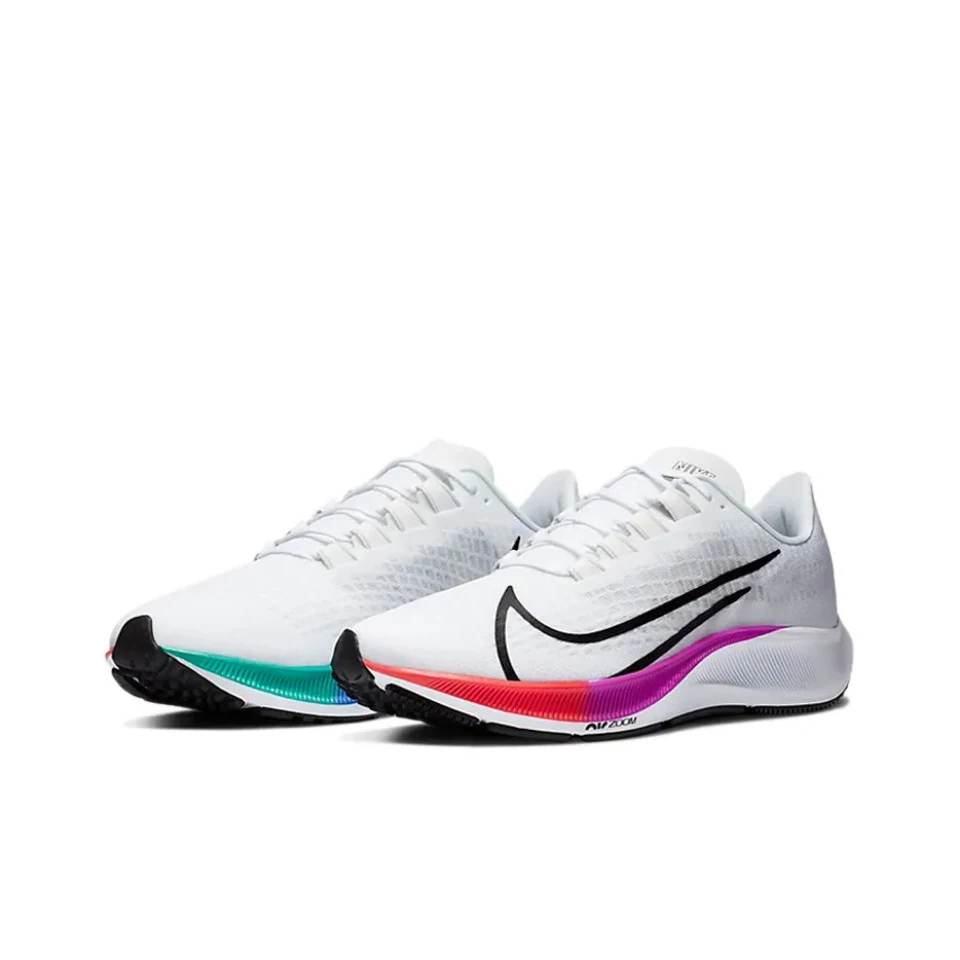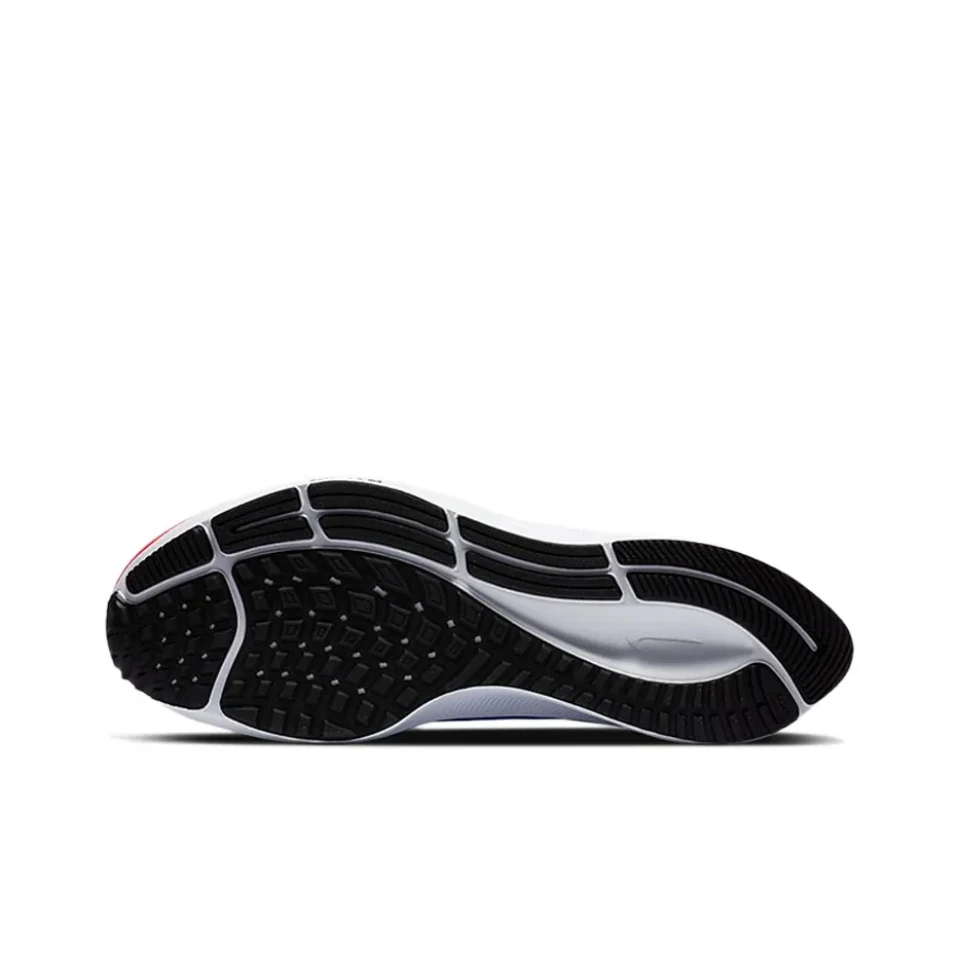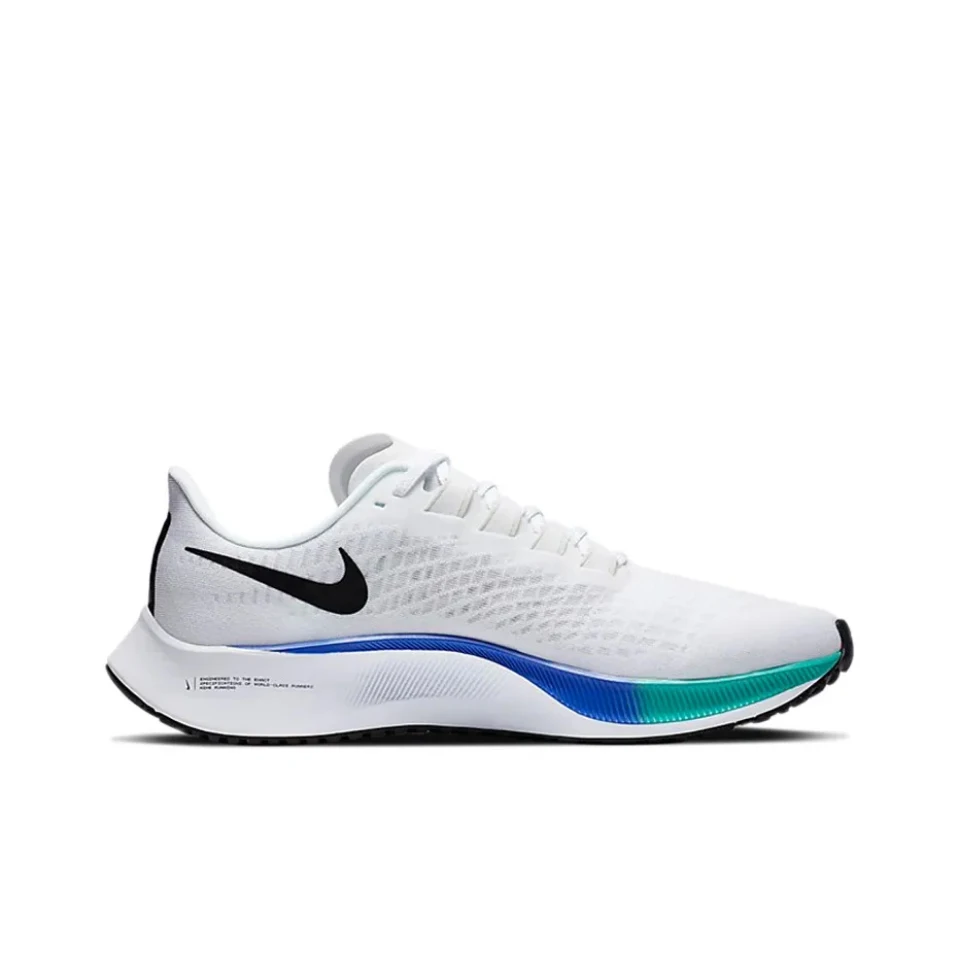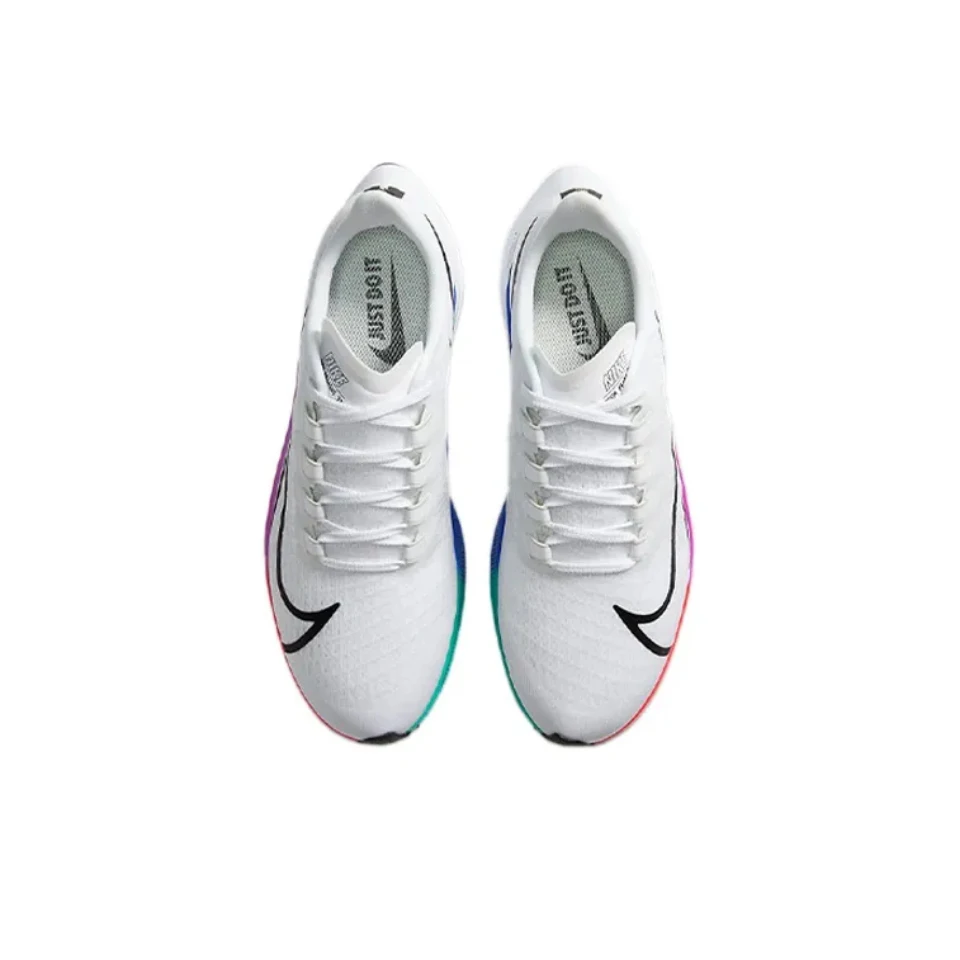Introduction
Cleaning white running shoes can seem like an overwhelming task. However, it doesn’t have to be difficult. With the right techniques and products, your shoes can look new again. This guide will walk you through how to clean white running shoes.

Understanding the Materials of Your Running Shoes
The Basics of Running Shoe Materials
To clean white running shoes effectively, it’s crucial to understand the materials used in producing them. Running shoes often contain various materials like mesh, synthetic fibers, rubber, and foam. Each material requires different cleaning methods. Knowing each material’s properties will help you choose the right cleaning solutions.
Mesh is commonly used for breathability. While it’s lightweight, it can attract dirt and grime. Synthetic fibers often make up the shoe’s upper. These materials can be resilient but may also hold stains if not cleaned properly. Rubber is generally found on the soles. It is durable but can become dirty and worn over time. Lastly, foam is used for cushioning. It can absorb moisture and may become discolored if not maintained.
Identifying Your Shoe’s Repair Needs
Before you start cleaning, check your shoes for damage. Look for cracks in the soles or fraying seams. If you spot any tears, you might need to repair these areas first. If the shoes are beyond repair, it may be time to consider a new pair. But if they just need a good cleaning, proceed with the following steps.
Pre-Cleaning Steps
Gather Your Cleaning Supplies
The next step is to gather all necessary supplies. You will need a few basic cleaning items to get started. Make sure you have:
- A soft-bristle toothbrush or a dedicated cleaning brush.
- A clean cloth or sponge for wiping.
- Mild detergent or a specialized footwear cleaner.
- Baking soda, which helps remove stubborn stains.
- A bowl of warm water for soaking and rinsing.
Optional items include:
- White vinegar, which can help with odor removal.
- Rubbing alcohol for tough stains.
- A soft towel for drying the shoes.
With everything on hand, you can streamline the process and be prepared for any surprises.

Remove Laces and Insoles
Before you begin cleaning, remove the shoelaces and insoles. Cleaning these parts separately helps achieve a more thorough clean. You can wash the laces separately in a bowl of soapy water. Soaking them for a few minutes should loosen dirt. Alternatively, you can place them in a mesh laundry bag and wash them in the machine.
Don’t forget to clean the insoles. They often harbor odors and dirt from daily wear. You can clean them using mild soap and water. After you wash them, let them air dry completely. This process helps prolong their life and ensures they won’t smell when you put your shoes back on.
The Cleaning Process
Spot Cleaning Stains
Now that you are set up, it’s time to clean your shoes. Start with spot cleaning. Use a soft-bristle toothbrush or a dedicated cleaning brush to scrub away dirt. Dip the brush into warm, soapy water. Gently scrub the stained areas using circular motions. Be careful not to scrub too hard, or you may damage the material.
For tougher stains, mix a paste of baking soda and water. Apply it to the stained area using the brush. Let the paste sit for a few minutes to allow it to penetrate the stain. Afterward, scrub gently with the toothbrush, paying close attention to the texture of the material. Rinse the brush in clean water frequently to remove dirt and grime.
Deep Cleaning Your Running Shoes
For a more thorough clean, you can opt for deep cleaning. Fill a basin or sink with warm water and a few drops of mild detergent. Submerge the entire shoe in the water, if possible. If not, use a damp cloth to wipe the shoes. Pay special attention to the areas around the seams and soles, as dirt tends to accumulate there.
Use a toothbrush to scrub areas that are hard to reach. Once you have heavily scrubbed the shoes, rinse them off with clean water. You can use a clean cloth to wipe excess suds away. Make sure to rinse until all soap is removed. Excess soap can cause discoloration if left on the fabric.
Drying Your Shoes Properly
The Right Drying Techniques
After cleaning, drying is crucial. Do not place your shoes in direct sunlight or a dryer. Excessive heat can warp the shoes and affect their fit. Instead, let your shoes dry at room temperature. Remove excess water using a towel, and place them in a well-ventilated area. You can stuff them with newspaper to absorb extra moisture and maintain their shape.
If your shoes are particularly odorous, sprinkle some baking soda inside. Let it sit overnight, then shake it out the next day. This technique helps absorb moisture and odor, ensuring they smell fresh.
Reassembling Your Shoes
Once your shoes are completely dry, it’s time to reassemble them. Replace the insoles and laces. If necessary, you can also add new laces to refresh the look of your shoes. Check the fit and feel, ensuring everything is back in place correctly before wearing them again. Your running shoes will now look cleaner and feel refreshed.

Tips to Maintain the Cleanliness of Your Running Shoes
Regular Maintenance Routines
To avoid the significant buildup of dirt, establish a regular maintenance routine for your running shoes. Simple tasks like wiping the shoes after each use or using a shoe spray can help keep them cleaner. Consider dedicating a day each month for a thorough cleaning session. This practice will ensure your shoes maintain their brightness much longer.
Use a cloth or soft brush to remove dirt after each run. You can also scrub the soles with a damp cloth to remove scuff marks. These small tasks can prevent heavy cleaning down the road, saving valuable time and effort.
Choosing the Right Running Conditions
The type of terrain in which you run can have a significant impact on how dirty your shoes get. If you run on wet or muddy paths, they will require more frequent cleaning. Consider choosing cleaner running routes if possible or at least plan for post-run maintenance. Opt for tracks or paved roads when you don’t want to deal with excessive dirt.
Additional Hacks for Stain Removal
Alternative Cleaning Solutions
Sometimes, your standard cleaning products may not work. In this case, you can try alternative cleaning solutions. Mix equal parts of white vinegar and water in a spray bottle. Spray the stained areas and let it sit for a few minutes. This mixture can effectively lift stains due to its natural acidity.
Another option is to use rubbing alcohol. Apply it to a cotton ball and blot at stubborn stains. Do not scrub, as this might damage the material. Instead, gently press down to lift dirt away from the surface. After treating the stain, rinse with a damp cloth to remove any remaining solution.
Using a Washing Machine for Tough Shoes
If your shoes are machine washable, you can take advantage of this method for a deep clean. Place your shoes inside a mesh laundry bag to protect them. Add a small amount of mild detergent and wash them on a gentle cycle with cold water. Avoid using hot water, as this can damage the adhesive that holds the shoes together.
Once the cycle is complete, allow the shoes to air dry completely. Again, do not put them in the dryer, as this could deform the shoes. Instead, let them dry naturally away from sunlight. This method helps get rid of accumulated dirt effectively.
Preserving Your Shoes for Longevity
Rotating Shoes in Your Workouts
To maintain cleanliness, consider rotating your shoes. If you have multiple pairs of shoes, alternate them during your workout routines. This strategy prevents excessive wear on one pair and allows them to last longer. It also gives you more time to clean and dry each pair without the need for rush cleaning.
When using different pairs, this rotation helps minimize the buildup of dirt. Each pair will have time to air out, ensuring longer-lasting freshness and performance. With proper care, running shoes can serve you well for a long time.
Proper Storage Techniques
Extend the life of your running shoes by storing them correctly. Avoid keeping them in damp or hot areas. Instead, place them in a cool, dry location. Use shoe trees to maintain their shape if you will not use them for an extended period. If possible, keep the box or use a proper storage container.
Storing your shoes properly can prevent premature wear and tear. Remember to keep them away from direct sunlight and moisture that can cause discoloration over time. Proper storage techniques keep your shoes looking newer for a longer time.
Conclusion: A Clean Start to Your Running Journey
Cleaning white running shoes may seem daunting, but it is manageable with the right approach. By following these detailed steps and tips, your shoes can remain fresh and clean. Establish routines for maintenance and cleaning to prolong the life of your shoes. With effort and care, your running shoes can help you achieve your fitness goals while looking their best.
In summary, understanding the materials and cleaning your shoes properly are crucial. Maintain your running shoes regularly, inspect for damage, and clean them thoroughly as needed. With these practices, you will keep your white running shoes clean and bright, ensuring they continue to perform well in your running journey.
